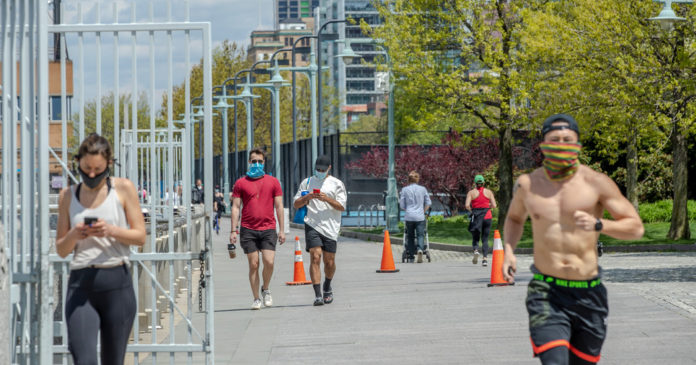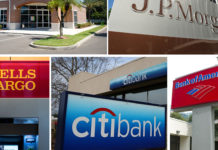Is it OK to resume athletic training, even if you have gotten through a bout of Covid-19 or tested positive for coronavirus or suspect you might have been infected? Two new expert-consensus statements from pulmonologists and cardiologists, published separately in The Lancet and JAMA Cardiology, urge caution.
The new statements point out that the always-thorny issue of when injured or ill athletes can return to training is further complicated now, since the novel coronavirus is novel and much about its short- and long-term effects on the body remain unknown. So, the authors of the new statements lay out tentative evaluations and protocols that, ideally, ill or homebound athletes would complete before returning to strenuous exercise. They also highlight a few troubling symptoms that potentially could raise new concerns down the road.
By now, of course, almost all of us recognize that fitness is no guarantee against Covid-19. Marathon runners, competitive cyclists, professional basketball players and other athletes are among the many who have tested positive for the virus, and some reportedly have developed severe illnesses. Untold numbers of other athletes may have been infected but asymptomatic and never realized they carried the virus.
Many of these athletes might now feel ready to resume heavy training. But the usual return-to-play criteria for sick athletes probably do not apply to someone who has been infected with the coronavirus, says Dr. James Hull, a sports pulmonologist at Royal Brompton Hospital in London and co-author of the new statement in The Lancet about athletes and coronavirus.
Since the 1990s, he says, sports medicine physicians typically have relied on the “neck check” to decide if and when an athlete with a respiratory condition should train. Using this measure, if an athlete’s symptoms are confined, by and large, to his head — meaning, above or in the neck, such as a runny nose, sinus pain and sore throat — he or she usually would be cleared to train and play.
But the novel coronavirus worries sports pulmonologists, Dr. Hull says, in part because in some people, the illness can seem benign at first, then rapidly go downhill. “We have seen people have some mild symptoms to start with and seem to improve,” he says, “only to then deteriorate really badly at seven days following their first symptoms.”
Because of this potential disease trajectory, he says, “it is important that, unlike what people would do with a normal viral infection,” such as a head cold, “they don’t exercise hard” while they have symptoms, especially in those first seven days, he says.
Instead, he and other pulmonologists, writing in The Lancet, advise athletes who have tested positive for the coronavirus or suspect they might be positive to rest, without any exercise, for at least 10 days from the point when they first feel symptoms. Then, assuming their illness remains mild, they should continue to rest for another week, even after their symptoms resolve.
This protocol is conservative, but aligns with a new consensus opinion about athletes, coronavirus, exercise and hearts published this month in JAMA Cardiology, with the backing of the American College of Cardiology’s Sports & Exercise Cardiology Council.
The cardiologists felt compelled to release this statement in part because the new coronavirus seems sometimes to have unexpected and perilous effects on hearts, even among robust athletes, says Dr. Jonathan Kim, a sports cardiologist at Emory University in Atlanta, and co-author of the new recommendations, with Dr. Dermot Phelan of the Sanger Heart and Vascular Institute in Charlotte, N.C., and Dr. Eugene Chung of the University of Michigan.
With most viral respiratory infections, he says, perhaps 1 percent of people who are infected develop related heart problems, such as myocarditis, which is an inflammation of the heart muscle. But there are indications that people infected with the coronavirus could have a much higher incidence of heart issues, he says, although the actual risks are hard to assess, with so much about the virus still mysterious.
Even so, he and his fellow cardiologists suggest, much like the authors of the Lancet paper, that athletes and committed exercisers who have tested positive for the virus but have mild or no symptoms — or who worry they might have been infected, without testing — stay home and rest for at least two weeks from the date of their first symptoms or positive test. This time period also is the length of self-isolation mandated by current health guidelines following any possible exposure to the virus.
After a minimum of two weeks of resting at home and assuming symptoms have improved, the pulmonologists and cardiologists advise returning slowly to exercise training, with a wary eye on symptoms. “You might have a mild cough and minimal shortness of breath when returning to sport now,” Dr. Hull says. But those symptoms should lessen day by day, he says. If they do not or you develop new wheezing or shortness of breath, “go to your doc and get your chest examined,” he advises, or arrange a telehealth call.
Dr. Kim agrees. For most athletes who have spent weeks at home recovering from the virus, the first few workouts could feel lousy, he says, since any lingering viral effects may combine with general physical deconditioning. So, expect some discomfort. But if you experience considerable or increasing chest tightness or new heart palpitations, stop exercising, contact your doctor and discuss whether you should complete cardiac testing, he says.
Any athletes who have been hospitalized or bedridden by the virus will be likely to need extensive pulmonary and cardiac testing and clearance from their physicians before working out again, he says.
But for those of us who are casual exercisers who have not tested positive for the virus or felt ill during this pandemic, walking, jogging, cycling and other activities remain safe and desirable, he says, with proper social distancing and face covering, of course. “It’s a good idea to be cautious now,” he says, “but exercise is still one of the best things you can do for your health.”
Source : Nytimes













